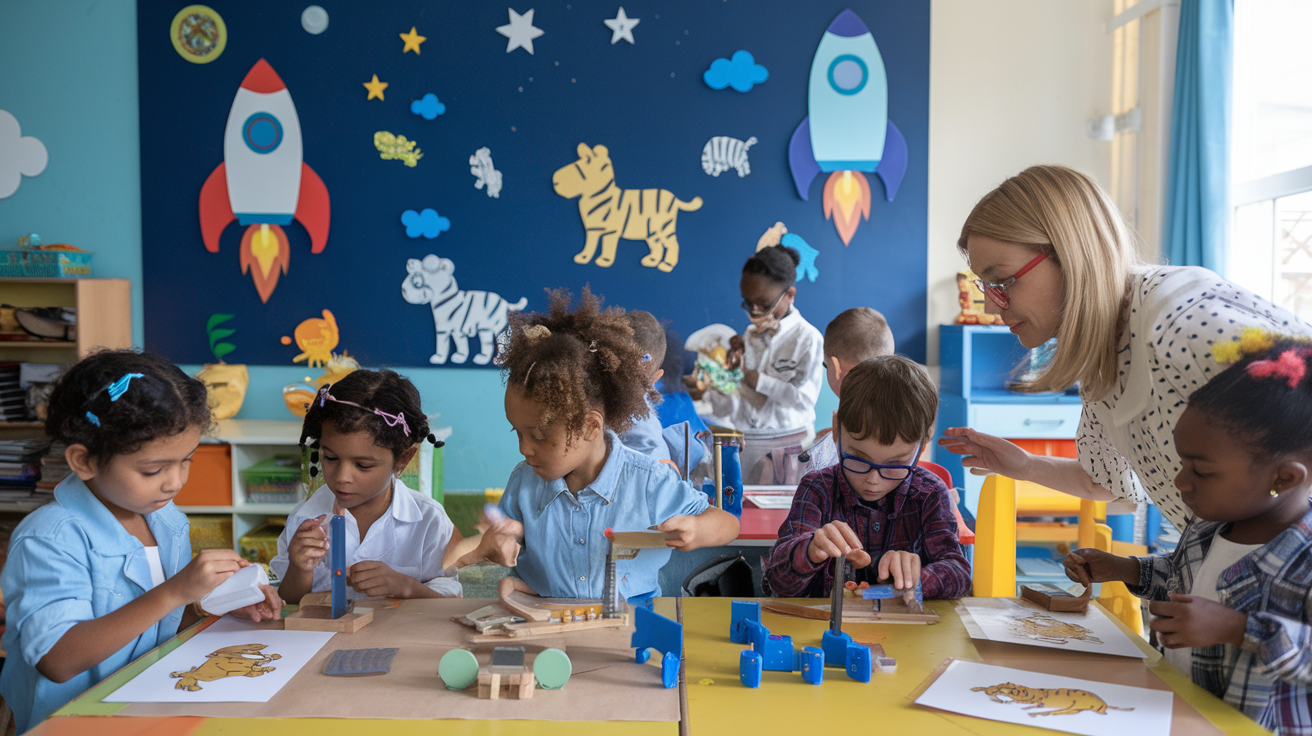
Many children with autism have intense interests that they are deeply passionate about. While these interests can sometimes consume their attention, they also provide opportunities for learning. Special interests can be utilized as a superpower to enhance academic skills and promote learning. By incorporating these obsessions into lessons in a creative way, they can become valuable teaching tools. When core subjects are connected to these motivating topics, they become more appealing to students.Inspire Writing Growth with Meaningful Special Interests
Enhance Math Skills with Special Number Interests
One way to utilize special interests is to build math skills. If your child is fascinated by transportation, dinosaurs, or space, encourage them to calculate figures related to their favorite facts and objects of admiration. You can create customized word problems using quantities of their beloved items. For example, if they are obsessed with trains, you can create a story equation like: “Thomas the Tank Engine traveled 9 miles of track before stopping to refuel coal. Percy chugged ahead 13 more miles. How many total track miles did the two trains cover?” These special interest scenarios encourage children to work through multi-step reasoning. Visual supports, such as matching real images of their obsession items with numbers, can be used to make the math more tangible and appealing. It is important to carefully review how to arrive at the answers and praise their effort. Over time, generalize the strategies to new contexts, gradually fading away the unique references.
My child is now six and a half years old, and he has developed a strong obsession with a game called “Lemmings,” which can be found on both Google and Apple stores. This game requires strategic thinking as the goal is to save a group of tiny creatures, also known as lemmings, and guide them to the exit by overcoming various obstacles along the way. In order to progress, the game relies on a fuel source known as energy units. Every two minutes, an energy unit is added to the total of 120 units in the energy tank.
To navigate the lemmings to safety, my child must make use of different tools and building options such as stairs, umbrellas to prevent falls, or blocks to block their path towards dangerous objects. Each tool that he employs consumes a certain amount of energy, ranging from one to five units. Therefore, in instances when his energy is running low, he has quickly learned to calculate the number of stairs or other elements he needs, as well as the amount of time he must wait for his energy unit to refill. I find it truly impressive that a six-year-old possesses such mathematical skills, particularly in multiplication.
Children who are deeply fascinated by specific subjects often display exceptional focus, analytical thinking, and memory skills when it comes to those particular topics. We can redirect and expand these strengths to enhance their math abilities by creating customized games, lessons, and incentives. For instance, for a child who loves transportation, we can create word problems related to that theme and reward their efforts with sticker charts, trading cards, or small vehicle toys. A student who is passionate about space can use a model rocket kit to practice measurements and apply numerical operations. By tailoring their learning experiences to their existing interests, we can foster their success!
Motivate Writing Through Meaningful Themes
Another way to motivate students is through writing. Many students on the autism spectrum find required writing tasks to be pointless and overwhelming. However, you can shift their perspective by allowing them to journal or write essays about their special interests. Provide an authentic audience by having them compile portfolios based on their obsessions to present to their classmates. Show them how their niche interests can connect to potential future vocations. For example, a child who loves space could practice explanatory writing by outlining a “day in the life” piece from an astronaut’s perspective. An animal enthusiast could write a letter advocating for an endangered species. These self-selected, passion-driven topics inspire students to create organized and detailed prose. By tying writing to their special interests, you show the relevance of writing, which enhances their engagement and motivation.
 Boost Reading Engagement by Using Preferred Characters
Boost Reading Engagement by Using Preferred Characters
Some children lose interest in dull fiction that focuses on alien characters and unfamiliar experiences. To make stories more exciting, we can replace the main characters and adventures with beloved figures and their thrilling escapades. For example, a child who loves Sonic the Hedgehog would be more interested in reading about his battles against Robotnik than in stories with random protagonists and settings. We can also encourage students to write and illustrate their own stories featuring their favorite characters, which helps them understand literary elements like plot and point of view. Adding graphic novels related to their obsessions to the classroom library also makes reading more enjoyable and accessible.
Foster Environmental Awareness Through Species Spotlights
Children who are obsessed with animals can deepen their scientific knowledge by researching their favorite species. They can be assigned projects that explore the habits, habitats, and conservation needs of these animals. For example, they can create an illustrated guide or a video on topics such as breeding pandas, saving sharks, or supporting local ladybugs. It is important to require them to cite online sources. Additionally, nature walks can be organized to allow them to collect firsthand data, such as recording bird calls or drawing natural wonders. By encouraging them to engage with nature, we can foster their environmental awareness.
Encourage Science Exploration via Hands-On Experiments
To ignite a young scientist’s curiosity, we can design hands-on experiments that align with their interests. For a child fascinated by space, they would enjoy building miniature rockets to test different variables that affect flight distances. Those who are curious about combustion can learn chemistry by experimenting with burning various materials to observe heat production and color spectrums. By linking laboratory work to their special interests, we can create more meaningful engagement and improve their retention of scientific concepts.
Incorporating Interests into Social Studies can help bring history to life by connecting the content to child’s existing passions. Encourage students to cast their preferred characters into time period storylines and determine the outcomes. For example, a dinosaur enthusiast can assign species on a prehistoric map of Pangea, while a Steam Era fan can create diagrams of locomotive parts crucial for powering cross-country trains. By tapping into their special interests, we can ensure that children grab hold of knowledge that truly matters to them, rather than just memorizing dry factoids.
The key is to customize academics around their obsessions using creative lessons, materials, and incentives. By meeting them in their world, we can guide them in discovering ours.
What engages your special kid? Share below!

 Boost Reading Engagement by Using Preferred Characters
Boost Reading Engagement by Using Preferred Characters
